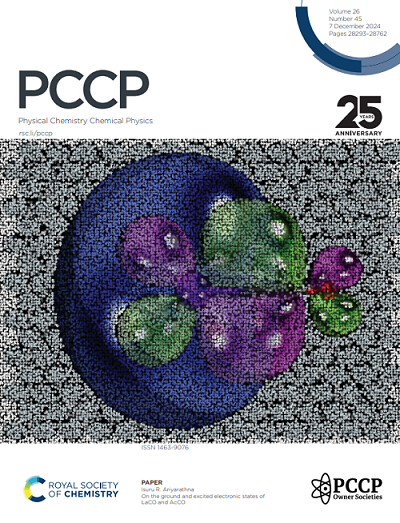Stacking induced symmetry broken and gap opening in Dirac half-metal MnF3
IF 2.9
3区 化学
Q3 CHEMISTRY, PHYSICAL
引用次数: 0
Abstract
Two-dimensional ferromagnetic materials have a broader development prospect in the field of spintronics. In particular, the high spin polarization system with half-metallic characteristics can be used as an efficient spin injection electrode. By first-principles calculation, we predict that monolayer MnF3 has Dirac half-metallic properties. The formation mechanism of this Dirac half-metallic state is mainly attributed to the local symmetry of magnetic Mn3+ in the sublattice. It is interesting to note that the local symmetry of can be broken in bilayer MnF3 through different stacking configurations. Therefore, bilayer MnF3 with different stacking models are established, and the calculation of their magnetic ground states shows that all the systems maintain a ferromagnetic ground state. The AA-stacking holds the symmetry and Dirac electronic states. Under the interfacial coulomb repulsion, the Dirac electronic states of the top layer and bottom layer of MnF3 are shifted relative to each other and overlap to form a nodal-ring state. Interestingly, in AB-stacking model, the inversion symmetry exists, while the sublattice symmetry of Mn is broken, resulting in the different orbital filling of Mn and forming a large insulating gap (732.2 meV). Additionally, the inversion symmetry of the system is broken in AC-stacking, while the intralayer sublattice symmetry is preserved. Therefore, under the effect of inversion symmetry broken, the Dirac electronic states of both top and bottom layer MnF3 will have a small gap opening (24.6 meV). The topological properties of all three systems have been analyzed. Based on the above research results, it can be realized to regulate the electronic states of the system by changing the stacking model between 2D magnetic homostructure, which provides an ideal platform for the design and development of spin logic devices.求助全文
约1分钟内获得全文
求助全文
来源期刊

Physical Chemistry Chemical Physics
化学-物理:原子、分子和化学物理
CiteScore
5.50
自引率
9.10%
发文量
2675
审稿时长
2.0 months
期刊介绍:
Physical Chemistry Chemical Physics (PCCP) is an international journal co-owned by 19 physical chemistry and physics societies from around the world. This journal publishes original, cutting-edge research in physical chemistry, chemical physics and biophysical chemistry. To be suitable for publication in PCCP, articles must include significant innovation and/or insight into physical chemistry; this is the most important criterion that reviewers and Editors will judge against when evaluating submissions.
The journal has a broad scope and welcomes contributions spanning experiment, theory, computation and data science. Topical coverage includes spectroscopy, dynamics, kinetics, statistical mechanics, thermodynamics, electrochemistry, catalysis, surface science, quantum mechanics, quantum computing and machine learning. Interdisciplinary research areas such as polymers and soft matter, materials, nanoscience, energy, surfaces/interfaces, and biophysical chemistry are welcomed if they demonstrate significant innovation and/or insight into physical chemistry. Joined experimental/theoretical studies are particularly appreciated when complementary and based on up-to-date approaches.
 求助内容:
求助内容: 应助结果提醒方式:
应助结果提醒方式:


